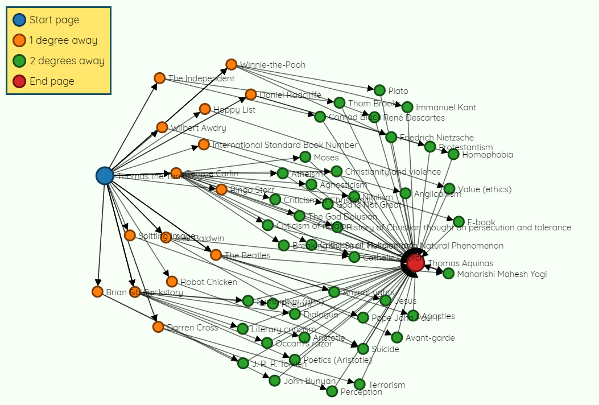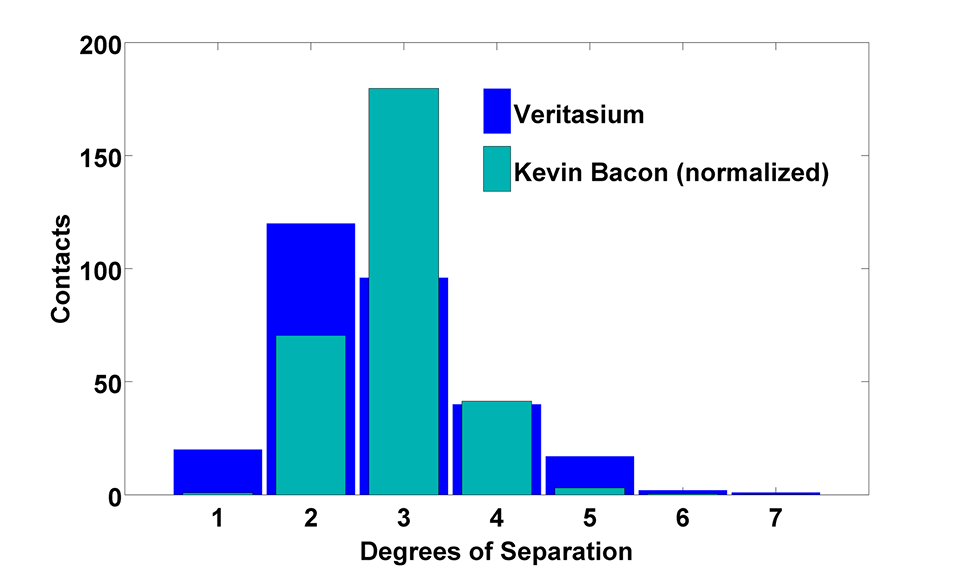

Under such a framework, it would become possible for one area to consider questions and problems found in other areas of radiosensitization, using a common analogy, that would allow for further development and unification of this multifaceted discipline. It is the aim of this review to develop the six degrees of separation from oxygen analogy as a unifying framework for conceptually organizing the field and for giving context to its varied subspecializations and theories. As the prime mover of all radiosensitizers, the pervasive influence of oxygen has consciously or unconsciously influenced the direction of research and development and provided the benchmark against which all other compounds and approaches are measured. With its theatrical roots, it certainly isn't for everyone, but interesting enough to give it merit.The popular theory six degrees of separation is used in this review as an analogy to relate all radiosensitization to oxygen. This can certainly be considered a failing, as the film seems lost in itself often times, a bit too bogged down on its own cleverness. The concept of six degrees of separation is often represented by a graph database, a type of NoSQL database that uses graph theory to store, map and query relationships.Real-world applications of the theory include power grid mapping and analysis, disease transmission mapping and analysis, computer. With six actors between the first and last, you get a separation of Six Degrees. Six degrees of separation is the theory that any person on the planet can be connected to any other person on the planet through a chain of acquaintances that has no more than five intermediaries. Players must race to be the first to create an alternating chain of 8 actors and 7 films they have in common. The exact tone of the film can be a bit unnerving, in that we're never quite sure if it's being tongue-in-cheek, or unabashedly preachy. Six Degrees of Separation challenges players to build their own chain of Actors and films that separate two actors by 6 Degrees. The humor is inconsistent, but also undeniable at times. Instead, the film weaved the narrative such that we are painted a portrait of New York socialite life, while also taking the time to give some social commentary (albeit a little on-the-nose). What I appreciated most was how the film incorporated all of the characters, and weaved a story that connected all of them, yet not in an obvious or melodramatic way. The story itself is undeniably intriguing, however. Thus, the film never fully makes the transition from theater to film, many of the situations simply feel more at home in an art house, not a movie. To be sure, capturing the finer points of modern intellectual discourse is tricky, especially in a comedic format (perhaps they should have consulted with Woody Allen), but doing so properly is essential.

The acting seems fine, but the lines the characters have to deliver never quite feel true. Six Degrees of Separation manages to give the script a cinematic flavor, changing up the scenes, keeping the story kinetic, but still has a stylistic and affected dialogue which is simply not befitting of a film drama. If done correctly, this can be work, but if done poorly, it can be a disaster. It's very talky, and completely dialogue-driven. As a result, a chain of 'friend of a friend' statements can be made to connect any two people in a maximum of six steps. That the film is based on a theatrical play is evident throughout. Six degrees Six degrees of separation is the idea that all people on average are six, or fewer, social connections away from each other. It's a very unique film, though not entirely successful. Six Degrees of Separation is one in a long line of 90s film adaptations of a stage play, centering around a young man, played by Will Smith, who enters the lives of two socialites, both confounding and informing the people he crosses paths with.


 0 kommentar(er)
0 kommentar(er)
